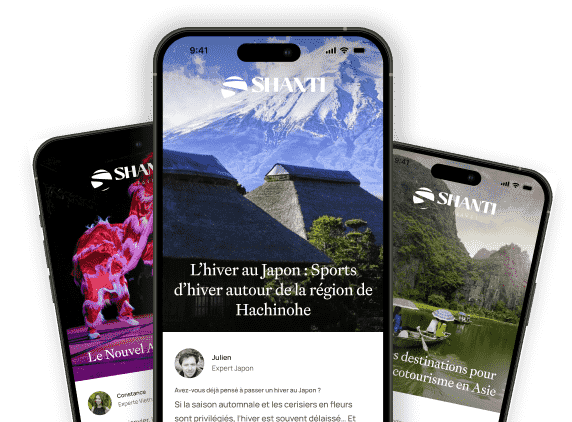Travel differently, travel better
Subscribe and receive our travel inspirations and practical advice twice a month.

Wanting to share your trip with a group?
See our guaranteed departures
Subscribe and receive our travel inspirations and practical advice twice a month.

Wanting to share your trip with a group?
See our guaranteed departures
When preparing for a trip to Myanmar and learning a few words of the Burmese language, you step into a vibrant realm of communication where language is much more than a tool—it's a window into the culture and daily life of the Burmese people. As travel specialists with two decades of experience advising explorers, we know that even learning just a handful of phrases can profoundly enrich your journey and foster genuine connections.
Burmese is the official language of Myanmar, but the country is home to a wealth of ethnic minorities, each with their own languages and dialects. Burmese itself is a tonal language, which means the pitch or intonation you use can completely change the meaning of a word—a detail that can be quite challenging for Western travelers. There are four primary tones: high, low, creaky, and stopped. These tones are not marked in writing, so listening and practice are essential.
The beautiful Burmese script is written left to right with rounded, circular characters and no spaces between words, creating a flowing text that is both aesthetically pleasing and a bit tricky for newcomers.
Politeness runs deep in Burmese society, and the language reflects this:
Below are essential phrases to help you navigate everyday situations and make a positive impression. Try practicing them before your trip and don’t hesitate to ask locals for corrections—they’ll appreciate your effort!
| English | Burmese (Romanized) | |------------------------------|----------------------------| | Hello | Mingalaba | | Good morning | Mingala nan ne khin ba | | Good evening | Kaung tho nya nei khin ba | | Goodbye / Good night | Thwa bi | | Thank you | Kyai zou tin ba de | | Sorry | Ngar taung pan par deh | | Please to meet you | Twei ya da wan tha ba de | | See you again | Noun gya thei da paw | | How are you? | Neh kaun la? | | I don't understand | Na ma le bu | | How much does this cost? | Ba lau le? | | Turn right | Beh-beq | | Turn left | Nya-beq | | Go straight | Teh-deh |
Learning a few basic words of the Burmese language is more than a practical gesture—it’s a bridge to Myanmar’s warm hospitality and centuries-old traditions. Locals are famously patient and appreciative towards foreigners making the effort. Consider joining a short language workshop at the start of your journey or simply practice with friendly street vendors, taxi drivers, or your hosts to pick up nuances of pronunciation and tone.
At Shanti Travel, we always encourage our travelers to engage with local culture from day one. Even simple greetings and polite phrases go a long way to opening doors and hearts in Myanmar. Enjoy the adventure—not just of the country, but of the language itself!